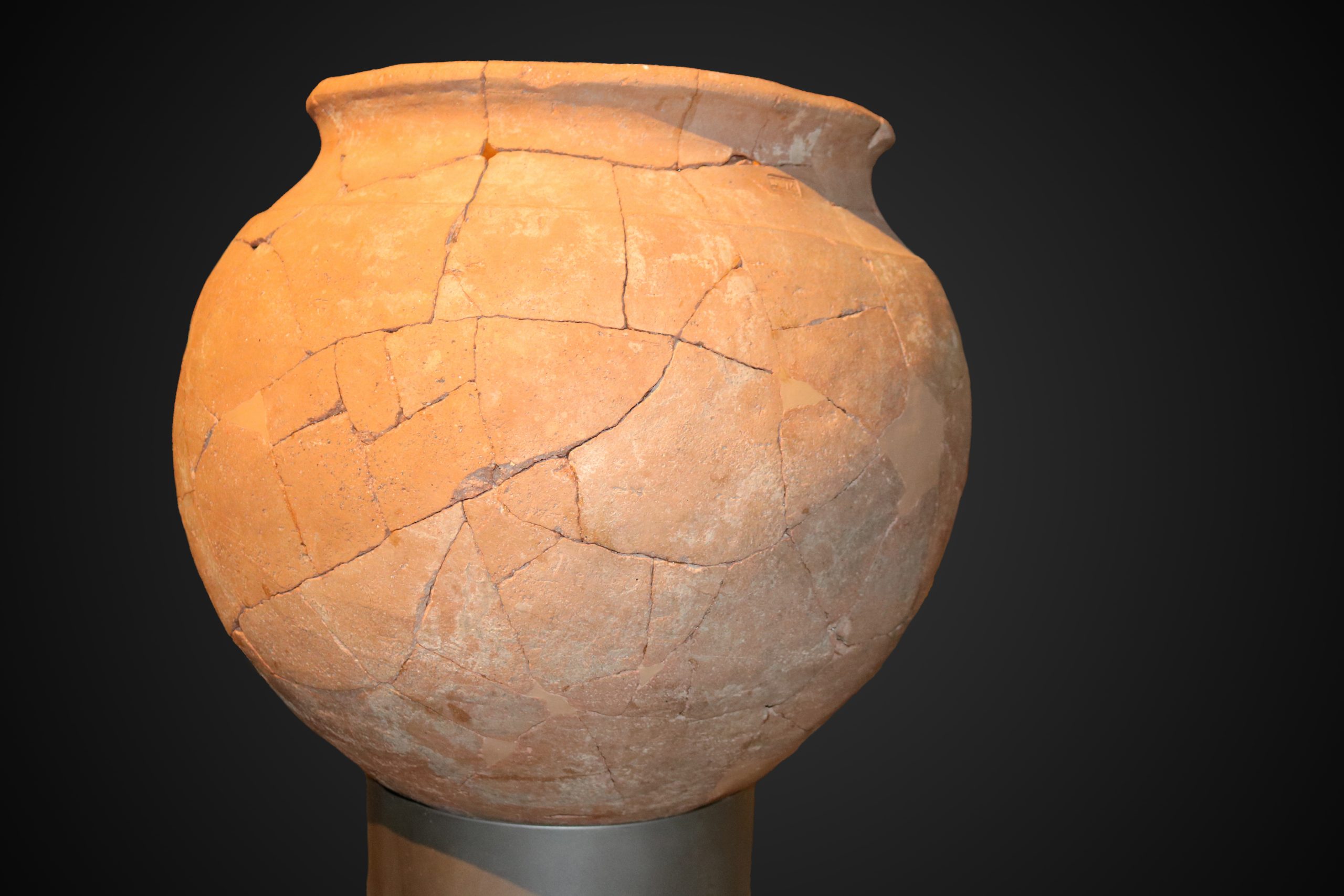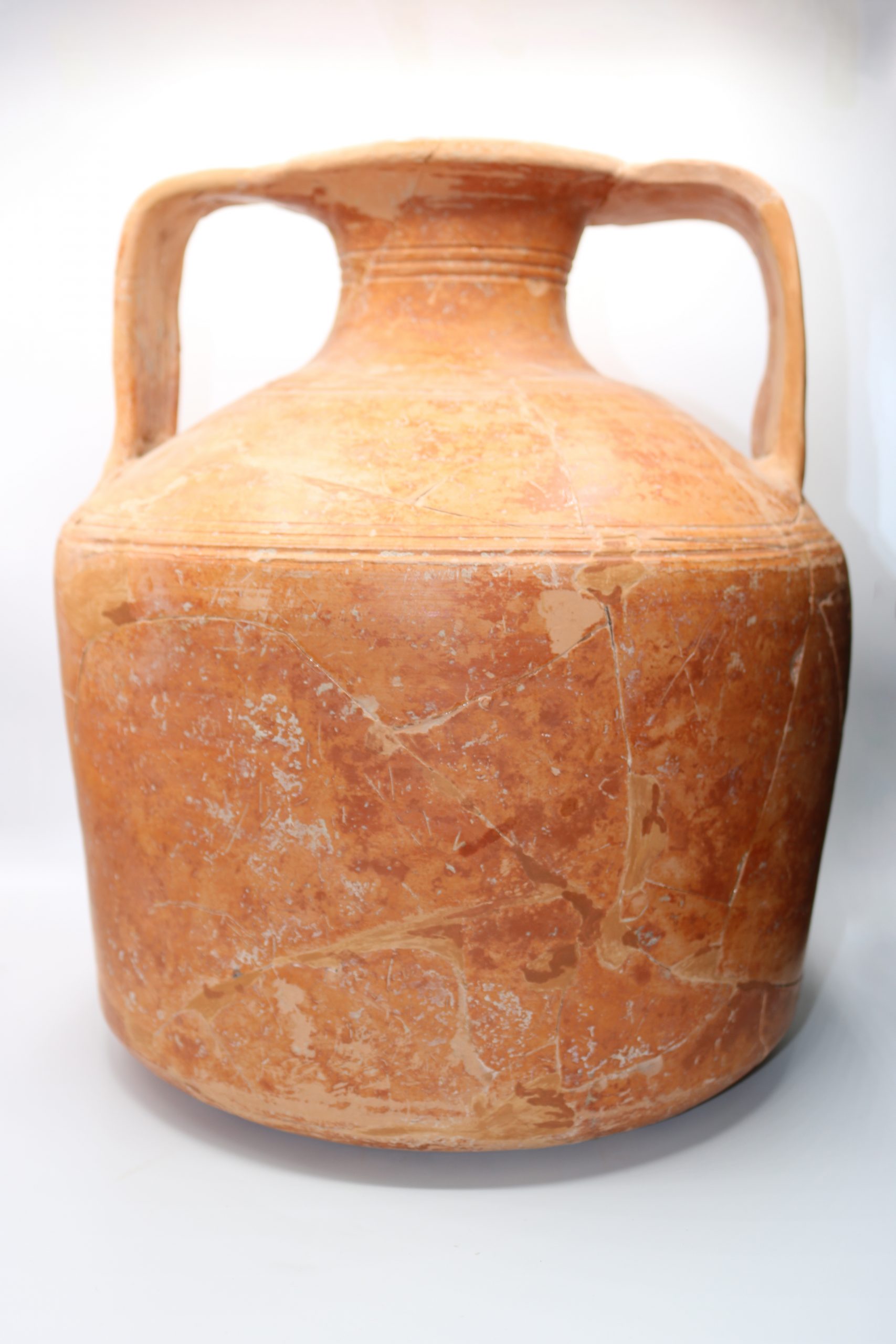- Object type
- jug
- Production date
- -40 / -25
- Fabric -
- Museum
- Museu de Badalona
- Culture
- Roman world
- Discovery location
- Ciutat romana de Baetulo. Carrer Pujol
- Materials
- pottery
- Township
- Badalona (Europa, Espanya, Catalunya, Barcelona, Barcelonès)
- Technique
- wheel-thrown
- Where is it?
- Exposició permanent
- Dimensions
- 23 x 17,2 x 6,8 cm






